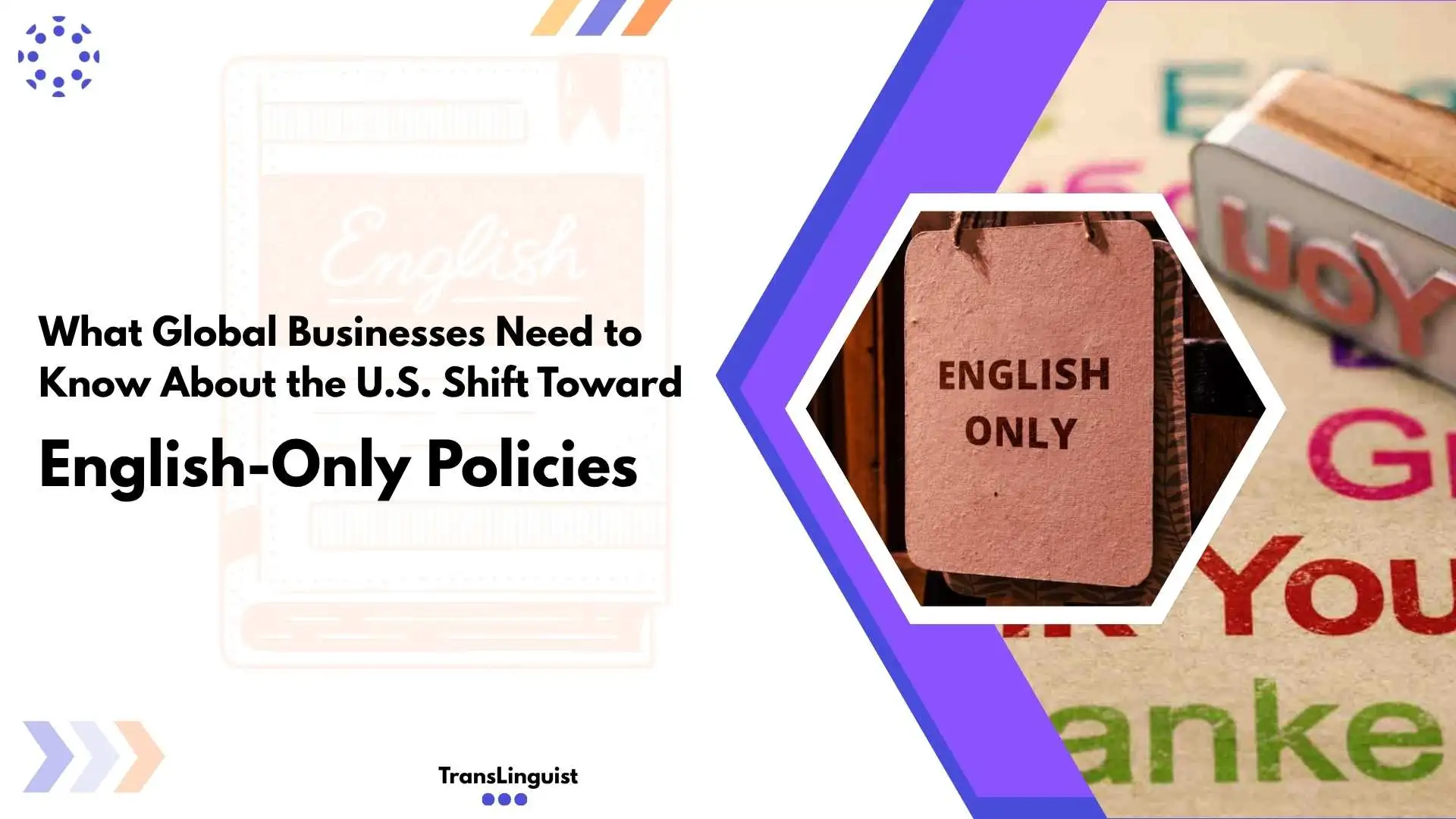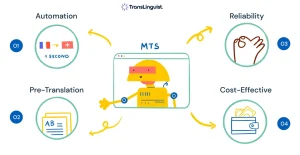If you sell, hire, or operate in the U.S., the debate over English-Only Policies is no longer background noise—it shapes how you staff, serve, and communicate. Even as some agencies move to reduce multilingual services, English-only policies don’t erase existing civil rights obligations or the business case for language access. For global teams, the real task is separating headlines from rules and building a plan that protects compliance, brand trust, and outcomes. In short: treat English-Only Policies as a governance signal—not a green light to cut language support where it still matters. (Reference reviewed for framing and emphasis.
What changed—and what didn’t
Recent federal directives, including an executive order and subsequent DOJ guidance, elevate English within government operations and urge reductions in multilingual services. These shifts coexist with enduring civil rights requirements mandating meaningful access for LEP individuals in federally funded programs. In healthcare, HHS reiterates that recipients must take reasonable steps to ensure access—often via interpretation and translated vital documents. DHS has issued similar LEP guidance for its funded programs. These obligations didn’t vanish.
In the workplace, the EEOC’s position is also unchanged: blanket speak-English-only rules are presumed unlawful under Title VII unless an employer shows a narrow, job-related need (e.g., safety in a specific task). Put differently, a policy that bans other languages at all times is a legal risk.
The practical impact for multinationals
A U.S. tilt toward English can influence tone and budgets, but it doesn’t nullify customer expectations or risk management. Your operations still live in multilingual markets—employees, partners, and consumers. Even industry commentary urging preparedness stresses that the shift “doesn’t eliminate the need for multilingual communication.”
Where will pressure show up first?
- Public-facing experiences with federal touchpoints: If your program involves federal funds (health, education, justice, grants), plan for LEP access—interpreters, translated vital documents, visible language options.
- Workplace rules: “English during safety-critical tasks” may be justified; “English only, always” risks Title VII claims. Train managers on the difference and document the business need when you apply a limited rule.
- Brand and community engagement: If government channels slim down multilingual content, private brands that keep inclusive touchpoints can gain trust—and market share.
A decision framework that travels across functions
Use this five-step filter to decide where language still matters most:
- Map critical journeys: Identify the top 5 employee and customer tasks that break when understanding drops (onboarding, safety steps, billing, returns, claims).
- Score risk vs. value: Estimate the cost of errors, complaints, or churn versus the cost of language support; prioritize high-risk flows.
- Choose the modality deliberately: Some moments need live interpreting; others require subtitles, captions, translated summaries, or bilingual scripts.
- Document the legal basis: If you’re a recipient of federal assistance, cite Title VI/LEP obligations in your SOPs; for workplace rules, cite the job-related justification and scope.
- Measure outcomes: Track completion rates, handle time, escalations, and CSAT from LEP users and compare with non-LEP cohorts; adjust coverage accordingly.
Policy guardrails you can’t ignore
- LEP access (Title VI): Recipients of federal financial assistance must provide meaningful access—usually via oral interpretation and translation of vital documents. “Vital” includes materials like consent forms, eligibility notices, and safety instructions.
- Workplace English-only rules: Keep English-only rules narrow—only when safety or efficiency truly calls for it, and only for the task at hand. An “English-only, all the time” approach is generally considered discriminatory.
- Public perception: Even if English-only policies reduce government multilingual content, private reductions can be perceived as exclusionary in diverse markets, increasing reputational risk.
Building a right-sized program (that survives reviews)
- Write a short language-access policy that names owners, escalation paths, and when to engage live interpreting versus asynchronous solutions.
- Create an internal glossary for product, legal, and safety terms; maintain English and target-language equivalents to reduce ambiguity.
- Instrument your systems so interpreter use, language preferences, and translated-document delivery are logged for audits where applicable.
- Train managers on lawful workplace language rules (what’s allowed, what isn’t) and how to handle complaints.
- Pilot and A/B test: “English-only” vs. targeted multilingual support on a journey; keep what improves outcomes and deprecate what doesn’t.
How TransLinguist helps
TransLinguist supports targeted coverage—remote interpreting for high-stakes moments, captions and subtitles for broadcasts or training, transcription for audits, and on-demand translation for policies, apps, and product notes. The aim isn’t to translate everything; it’s to protect outcomes and compliance where English-only policies would otherwise introduce risk.
Conclusion
Policy tone is shifting, but your obligations and audiences haven’t disappeared. Treat U.S. English-only policies as a prompt to get precise: keep English for low-risk, internal drafts; keep multilingual support where law or outcomes demand it. Done well, that balance reduces rework, strengthens inclusion, and keeps you out of legal trouble. Teams that document choices, track results, and communicate clearly make English-only policies work in practice.
Build a plan you can defend: partner with TransLinguist for right-sized interpreting, translation, and captioning that meet U.S. English-only requirements and protect CX and compliance.
FAQs
Do English-only shifts cancel Title VI language-access duties?
No. Recipients of federal financial assistance must still provide meaningful access for LEP individuals (interpretation and translated vital documents).
What’s the business case to keep multilingual touchpoints?
Reference analyses stress that customers and users remain multilingual; brands that sustain inclusive touchpoints protect trust, loyalty, and performance.
How do we decide which content needs translation?
Prioritize vital documents and high-risk journeys; use data (errors, escalations, CSAT) to tune where multilingual support changes outcomes.
How should we write a lawful English-use policy?
Define the business need (safety/efficiency), limit scope and duration, train managers, and provide complaint channels; review against EEOC guidance.



